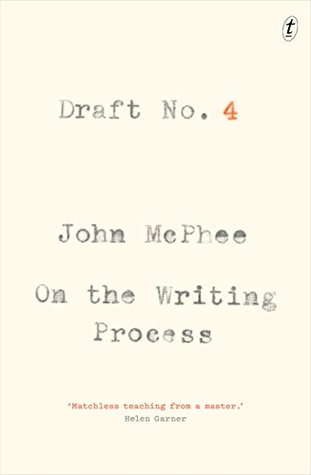More on this book
Community
Kindle Notes & Highlights
Ideas are where you find them,
new pieces can shoot up from other pieces, pursuing connections that run through the ground like rhizomes. Set one of these progressions in motion, and it will skein out in surprising ways, finally ending in some unexpected place.
Developing a structure is seldom that simple. Almost always there is considerable tension between chronology and theme, and chronology traditionally wins.
A piece of writing about a single person could be presented as any number of discrete portraits, each distinct from the others and thematic in character, leaving the chronology of the subject’s life to look after itself.
Readers are not supposed to notice the structure. It is meant to be about as visible as someone’s bones. And I hope this structure illustrates what I take to be a basic criterion for all structures: they should not be imposed upon the material. They should arise from within it.
A piece of writing has to start somewhere, go somewhere, and sit down when it gets there. You do that by building what you hope is an unarguable structure. Beginning, middle, end. Aristotle, Page 1.
Often, after you have reviewed your notes many times and thought through your material, it is difficult to frame much of a structure until you write a lead. You wade around in your notes, getting nowhere. You don’t see a pattern. You don’t know what to do. So stop everything. Stop looking at the notes. Hunt through your mind for a good beginning. Then write it. Write a lead.
Writing a successful lead, in other words, can illuminate the structure problem for you and cause you to see the piece whole—to see it conceptually, in various parts, to which you then assign your materials. You find your lead, you build your structure, you are now free to write.
The lead—like the title—should be a flashlight that shines down into the story. A lead is a promise. It promises that the piece of writing is going to be like this. If it is not going to be so, don’t use the lead.
A lead is good not because it dances, fires cannons, or whistles like a train but because it is absolute to what follows.
Another way to prime the pump is to write by hand.
What counts is a finished piece, and how you get there is idiosyncratic.
Another mantra, which I still write in chalk on the blackboard, is “A Thousand Details Add Up to One Impression.” It’s actually a quote from Cary Grant. Its implication is that few (if any) details are individually essential, while the details collectively are absolutely essential.
If you have come to your planned ending and it doesn’t seem to be working, run your eye up the page and the page before that. You may see that your best ending is somewhere in there, that you were finished before you thought you were.
In discussing a long fact piece, Mr. Shawn would say, often enough, “How do you know?” and “How would you know?” and “How can you possibly know that?” He was saying clearly enough that any nonfiction writer ought always to hold those questions in the forefront of the mind.
If you are telling yourself you’re a poet, write poems. Write a lot of poems. If fewer than one work out, throw them all away; you’re not a poet. Maybe you’re a novelist. You won’t know until you have written several novels.
Art is where you find it. Good writing is where you find it.
My advice is, never stop battling for the survival of your own unique stamp. An editor can contribute a lot to your thoughts but the piece is yours—and ought to be yours—if it is under your name.
Any error is everlasting.
“Dear Jenny: The way to do a piece of writing is three or four times over, never once.
Writing is selection. Just to start a piece of writing you have to choose one word and only one from more than a million in the language. Now keep going.


